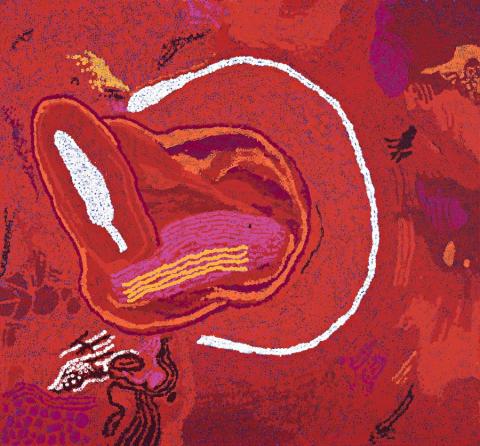KATA TJUTA, 2010
TOMMY WATSON
synthetic polymer paint on linen
185.0 x 200.0 cm
inscribed verso: artist's name, title, date, size and Agathon Galleries cat. AGTW10100304
Agathon Galleries, Sydney
Private collection, Melbourne
Tommy Watson began painting in 2001 at a time when Aboriginal art was being recognised internationally as the most exciting contemporary art movement of the new millennium. Born at Anamarapiti, 44 kilometres west of the present-day community of Irrunytju, he travelled in the bush with his parents and learnt about hunting and gained respect for his country from his father.
Watson created'works of immense visual power and complexity distinguished by an outpouring of magical colours'.1 His application of minimal colourfields spreading across the canvas recall ancestral stories of his Pitjantjatjarra heritage, originating from one of the nation's most arid and unforgiving regions. In Kata Tjuta, 2010, an arc of thick white dots draws immediate focus, whilst in the layers below Watson washes the surface of the canvas with blocks of colour that as Judith Ryan notes have an'appeal ... that relates to the spatial complexities and distinctively tactile topographical variations described through the use of luscious, thickly dotted layers of bright pink, whites, yellows, oranges, reds, purples, blues and greens. In expressing the intensity of his relationship to 'Country', Watson infers the potent and mysterious dimensions of his sacred world by sinking the visual elements into what becomes a 'prolonged meditation on art and life, space, time, perception and the nature of reality itself'.'2
His work was first exhibited at Aboriginal and Pacific Art, Sydney in 2002 and was featured in the exhibition RAKA AWARD: Places that name us, The Ian Potter Museum of Art at the University of Melbourne in 2003. Watson is well-represented throughout the Australian state and national collections and his work is held in the Musée du Quai Branly, Paris.
1. Ryan, J., Colour Power: Aboriginal Art post 1984, National Gallery of Victoria, Melbourne, 2005, p. 112
2. Ibid.
CRISPIN GUTTERIDGE
